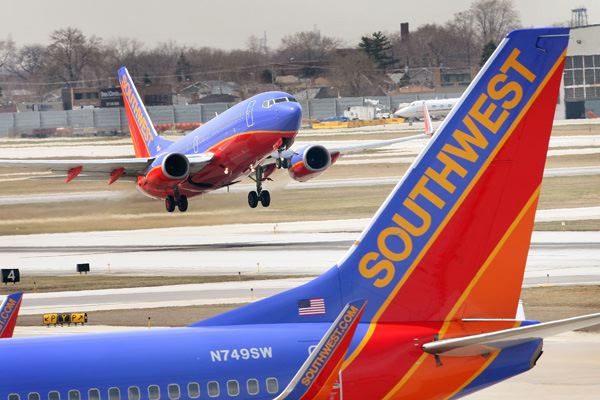He’s most productive away from the office. He made his name watching a couple of slightly distinct birds. In his later years, his beard was particularly impressive. He is one of the most prominent scientists in the world.
At this point, most even somewhat versed in science can guess who I’m depicting: Charles Darwin. Sailing to the Galapagos Islands in the nineteenth century, Darwin’s findings would shape modern science forever. Noticing slight variations in several finches, Darwin proposed that, over time, species evolve in adjustment to their surroundings in a process which he called natural selection. Small adaptations, such as a slightly more pointed beak, which enabled finches to open nuts, would increase the odds of survival for these fortunate birds, enabling them to reproduce more frequently than others and eventually outnumber the others, modifying the species forever.
Although Darwin lived long before man developed the ability to fly like these finches, his theory of evolution holds particularly true in what is an increasing volatile aviation industry. In order to succeed, modern airlines, like Southwest Airlines, must demonstrate a willingness to change and respond to industry shifts, or risk extinction. It is this embrace of change, especially in recent years, that has allowed Southwest Airlines to remain the most fiscally successful airline for the past forty years, earning a profit each year while many of its competitors have drowned in the hurricane of bankruptcy.
For the majority of its existence, Southwest has been regarded as a low-cost, low-frills alternative to the larger legacy carriers, such as American, Delta, and United. However, several recent developments challenge this identity. For one, Southwest seems increasingly willing to abandon that which it draws the most attention from, its refusal to charge baggage fees.

A new advertising campaign, which first aired during the NCAA Tournament last March, best revealed this shift. The “Welcome Aboard” ad seemingly emphasizes the people who fly Southwest as opposed to the airline’s prior “Bags Fly Free” mantra, which emphasized the ability of customers to check up to two bags without charge. Gone are the casual, fun-loving, open-chested ground crew in favor of who Southwest calls “pioneers” and “entrepreneurs,” giving the impression that Southwest increasing targets business travelers, as opposed to its traditionally leisure-centered audience. Also, while former Southwest advertisements have often included humor, the voice audible appears very formal and straight-forward. This ad has generated speculation that Southwest plans to abandon its free bags policy, which it ignores in this ad, in the near future.
Gary Kelly, CEO of Southwest, speaks in a manner which reflects this idea. He warns that the airline “never [says] never” regarding bag fees, claiming that, in the coming years, his customers may prefer that Southwest isolate bag fees from the airfare, rather than bundling them together. This also appeals to a business-oriented audience, which is less likely to carry bags than those who fly saddled with luggage for vacation.
Whether Southwest in fact incorporates bag fees remains to be seen as Kelly currently believes that the policy against these attracts “more customers and more revenue.” The airline’s opposition to bag fees, he claims, draws additional customers, who might choose another airline if Southwest reverses its policy. Doing so would likely cause a wave of public backlash. However, public resentment represents less of a deterrent as in the past, as, according to a study published by J.D. Power & Associates, customers have become increasingly resigned to the reality of ancillary fees. Charging bag fees, therefore, may not sway many customers away from Southwest Airlines.
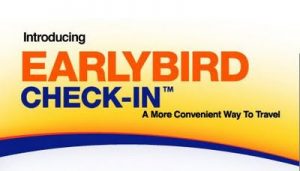
Southwest has already implemented a few other ancillary fees, such as a no-show penalty, and offered several à-la-carte options, like Early Bird Check-In, which, for $12.50, secures a better boarding spot for customers, outside of its base fare. These parallel the trend modeled by legacy carriers to charge customers additional fees and to reduce the number of services offered free of charge, and hint that Southwest may be prepared to move past shuttling bags across the sky for free.
In addition, though many associate Southwest with low fares, customers can often find lower fares by booking with another airline. Notably, Spirit Airlines has developed a reputation for being an “ultra low-cost” carrier and usually sells cheaper base fares than does Southwest Airlines. Spirit’s low fares have become so pervasive that Vinay Bhaskara, an aviation analyst, hypothesizes the “Spirit Effect” may have outpaced the legendary “Southwest Effect.”
According to the “Southwest Effect,” the entry, or even the threat of entry, of Southwest into a new market precipitates both a drop in airfare and an increase in service to that market. But Bhaskara’s work reveals that, among major carriers in 2012, Southwest charges the third highest per-mile rate, only lower than Delta and American. For comparison, JetBlue arrived at 11.35 cents per mile, while Southwest landed at 12.05 cents per-mile, resulting in a fairly drastic fare difference over flights of sizable length. Although Spirit does not yet represent a “major carrier,” it offers an even lower per-mile rate. Of course, as of now, Southwest’s fare includes the price of two bags, whereas checking two bags elsewhere would run an additional charge, sometimes upwards of $50 each way.
The expiration of Southwest’s fuel-hedging contracts likely led the airline to increase its fares. During the early portion of this century, Southwest was able to buy fuel for below market-value due to some clever hedging contracts. In the 1990’s, the airline foresaw burgeoning fuel prices and locked in what seemed like high fuel prices at the time; but these panned out relatively cheap near the end of these hedge contracts due to the rapid spike in fuel prices. Fuel composes a large chunk of an airline’s expenses, and the lack of ability to acquire it cheaply after these deals expired in 2006 forced Southwest to raise its prices or risk massive losses.
Southwest also maintained low fares by the work of its highly motivated employees, who achieve astronomic levels of productivity compared to those of competitors. Southwest ingrains a renowned collaborative, friendly attitude in its employees from the moment they step foot in the door for training. The ability of these employees to function together seamlessly through strong relational coordination- as suggested by Jody Hoffer Gittell in her book, “The Southwest Airlines Way”- enabled the company to quickly return a plane to the sky, where it could garner the airline profit. Southwest is famous for its “twenty-five minute turns,” or its ability to, from the moment a plane lands, return it to flight within twenty-five minutes, a remarkable feat given the number of tasks that need attention and the number of employees they involve on the ground. But Southwest has been largely unable to replicate this recently, for a couple of reasons.

Recent tension between employees and the company at Chicago Midway, one of the airline’s largest bases, could hint at a deteriorating employee-company relationship, an essential ingredient to employee productivity. On January 2, a series of Southwest planes remained stranded on the tarmac for hours because several employees failed to arrive at work, citing illness as the cause for their absence, though the incident presumably functioned as a form of protest against what has been a lethargic, stalled contract negotiation. Southwest responded by demanding its employees provide proof of illness, defending its right to declare an emergency in treacherous weather, when employees are most needed. An impending lawsuit threatens to permanently mar relations in Chicago, as has already been the case in other areas.

Entry into larger airports has also threatened Southwest’s ability to consistently turn planes within the scheduled time-frame. While the airline traditionally avoids larger airports in favor of smaller, alternate airpots within a city- Dallas Love Field, an alternate to DFW, represents a prime example- it has recently demonstrated a willingness to migrate into larger airports, such as Atlanta Hartsfield-Jackson International Airport, the world’s largest airport. Large airports, breeding grounds of delays, cramp an airline’s productivity, as more time must be allotted for all tasks, such as the transfer of baggage and cargo, and taxing to and from gates. Landing at larger airports also requires a larger fee than opting for a smaller airport, necessitating that Southwest charge a higher fare.
At these larger airports, Southwest must also cope with other aircraft and other airlines at the facility, which are easier to avoid at smaller airports. Though Southwest mostly operates using a point-to-point structure, carrying passengers directly to their destinations in most cases rather than feeding them through a hub airport, the hub activity of other airlines may sometimes result in delays for Southwest.
American Airlines recently announced its intentions to “re-bank” its hubs. For a period of years, it has experimented with “rolling” hubs, which dispersed flights arrivals and departures throughout the day to minimize delays and limit the number of employees and gates needed. But “banking” hubs concentrates arrivals and departures within a close time period to reduce the amount of time connecting passengers need to spend in the airport, something passengers generally prefer to avoid and a luxury they will pay more for. This may create delays during peak periods, reducing Southwest’s on-time percentage at other airline’s hubs that it flies to unless it also adjusts its scheduled to accommodate for these changes, which would cramp its productivity.
But several signs still point to a continuity between the “old Southwest” and the “new Southwest,” if such a distinction even exists. For one, Southwest continues to fly only one aircraft, the Boeing 737, which helps temper price increases. This allows Southwest to control expenses, as the airline needs only stock one set of parts and hire employees familiar with only one aircraft. Operating only one aircraft also makes planes virtually interchangeable, giving Southwest some insurance if one airplane breaks and needs immediate replacing, allowing the avoidance of costly cancellations. When Southwest bought AirTran, it flew the Boeing 717 in addition to the 737; but Southwest soon leased out the 717’s to Delta Airlines, indicating that the airline plans to continue its traditional strategy. That said, if Southwest intends to ever expand overseas- which it presumably will, eventually- it will need to use an aircraft able to cover that distance, which the 737 is not.
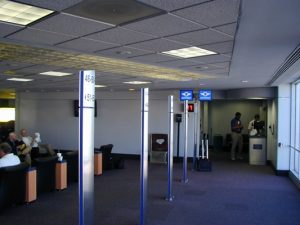
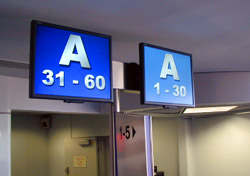
Southwest also retains its open-seating policy. Upon boarding the aircraft, customers may select any available seat, in contrast to other airlines, which assign passengers a pre-selected seat. This allows Southwest to incentivize early check-in, since doing so ensures passengers they will receive an early boarding position, allowing them a myriad of seat choices once stepping onto the plane. Checking-in early at other airlines doesn’t provide any additional incentive. Open seating also speeds the boarding process since customers need not hunt for a particular seat, limiting the time a plane spends on the ground.

And though Southwest braves entering a few larger airports like Atlanta, it remains committed to its strategy of flying from alternate airports. With the acquisition of AirTran, Southwest gained entrance to several markets in the Caribbean and Mexico, among others. In preparation to serve these markets, Southwest chose the Houston-Hobby, Fort Lauderdale, and Baltimore-Washington airports, each relatively modest airports, as international cogs. In particular, establishing Houston as an international shuttle mandated a sizable investment in building a new international terminal, reinforcing the idea that Southwest intends to maintain a strong presence in smaller airports.
Even the gradual process by which Southwest has absorbed AirTran reflects its traditional growth model. Though Southwest first announced its intention to merge in 2010, it will complete its integration process later this year in 2014. Growing too quickly has proved poisonous to airlines merging previously, and Southwest has attempted to remain true to its identity by easing the integration, allotting proper time to training its new employees in the airline’s culture, a vital part of its image.
Even areas where Southwest has changed have not always proved ominous for its travelers. A few years ago, Southwest decided to re-vamp its Rapid Rewards program, which allows customers to accrue points they can redeem to book free airfare. The re-designed program accounts for the distance flown by the traveler, an element which the former, merely granting a free flight for every eight round-trips flown, had not considered. This could reward those who fly longer trips, allowing them to earn free flights even quicker. Overall, this new program appears much fairer to the customer.
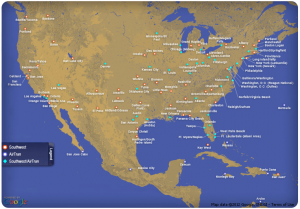
The entrance of Southwest into new markets also gives customers a diversity of destinations to choose from. Customers must accept that gradually rising airfares are the byproduct of Southwest serving more destinations. Southwest’s hey-day as a low-cost carrier occurred when it served only cities within Texas. And while this accompanied extremely low fares, it did not provide many locations for the traveler to pick from.
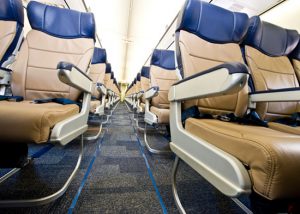
There is no question that Southwest Airlines has evolved from its past ways, when scantly dressed flight attendants roamed the aisles of its planes. But, like the evolution of humans, this doesn’t necessarily represent a negative development. Rather, its evolution signifies a necessary growth of the airline, one which should not be feared but lauded. In an arena of four major players- Delta, American, and United the others- Southwest appears as prepared as ever to duke it out for its customers’ loyalty.


